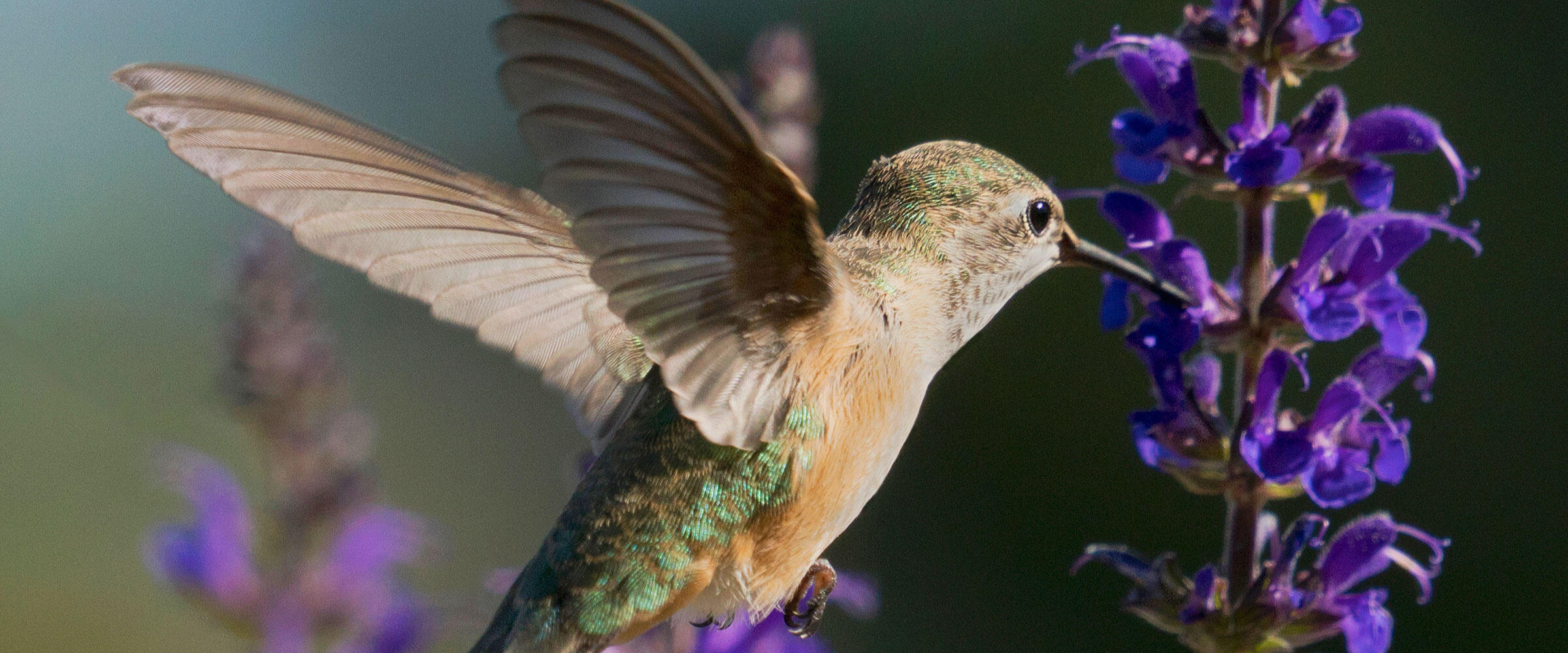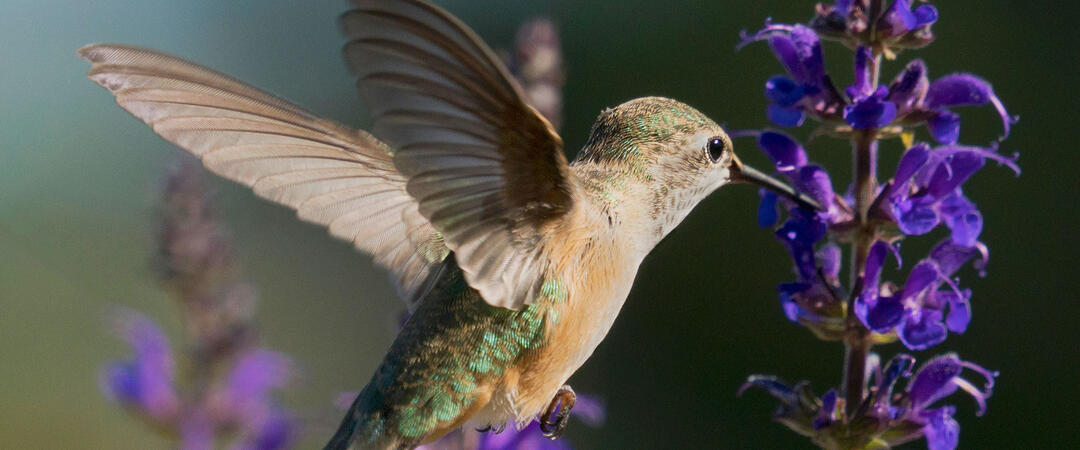In the Habitat Hero program, we often say that just a few pots with the right plants on a deck or porch can provide significant habitat for insect pollinators or hummingbirds. Still, we sometimes forget just how little it takes to make a difference.
A violent thunderstorm one recent August evening showed our communications director the power of just a few pots. Her story reminds us how important container gardens can be for some of our favorite pollinators.
It Was a Dark and Stormy Night...
Rain pounded down, water overflowed the gutters, and wind gusts whipped the trees around. When the storm passed, the temperature had dropped from 82 degrees to 50 degrees Fahrenheit.
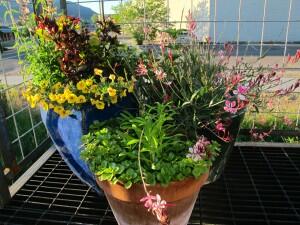
Before the rain even quit, the air around my hummingbird feeder vibrated with zooming bodies, accompanied by a cacophony of trilling and chattering as the hovering dynamos jockeyed for the nectar.
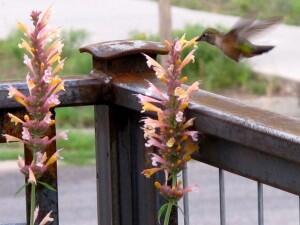
While a gorgeous cinnamon male Rufous Hummingbird and a brilliant emerald-green male Broad-tailed Hummingbird (they of the trilling wings) battled over the feeder, I noticed two hummingbirds quietly hovering near the pollinator container garden—two large pots planted with agastache, salvia, and other nectar-bearing flowers—just steps from the feeder.
The two birds worked their way from flower to flower, sucking nectar from the blossoms.

When the larger of the two birds zoomed away, the smaller one quit hovering and simply perched on the wire grid railing right next to the agastache flowers, sticking its short, slender beak into the nearest flower to sip nectar.
For the next ten minutes, the little one fed while perched, checking out each flower within reach, while about five male hummingbirds competed for the feeder.
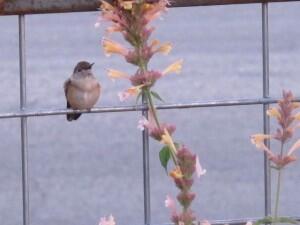
The little one watched them, and moved from perch to perch around the flower spikes, but didn’t leave its easy nectar source, the high-calorie fuel it needed to survive the night.
The bird looked like a young of the year, lacking distinctive markings. Still, its diminutive size, short bill, squared-off tail, and behavior—perching while feeding—is a clue to its species.
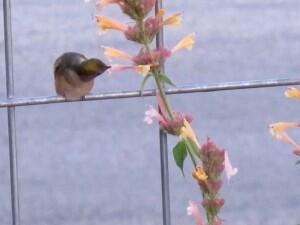
It was likely Calliope Hummingbird, the smallest of the four hummingbird species that pass through the south-central Rockies in summer. Calliopes stretch just over three inches long, weigh a single ounce, and fly all the way to Central Mexico for the winter!
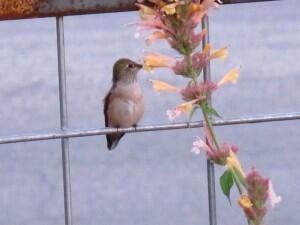
The tiny hummingbird reminded me of why I plant a variety of nectar-bearing plants: when there’s a crowd, not everyone can compete for the feeder.
The bird also reminded me of how little it takes to provide hummingbird habitat: two pots on my deck gave the little one sufficient food to survive the storm.

